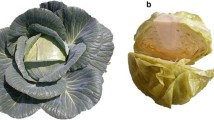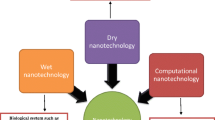Abstract
The laser pretreatment of seed is drawing pronounced attention from the scientific community for its positive impact in boosting germination, seedling, and growth of plants. In this study, the laser pretreatment of Adansonia digitata (A. digitata) seeds was evaluated. Eight laser treatments were conducted at different powers, 10, 20, 40, and 80 mW, with the two-time interval for each power at 2 and 4 min. The outcomes indicated that the most efficient irradiation was 10 mW/2 min which induces the highest germination rate and polyphenolic contents for seeds. Based on these results, the animal experimental design was processed to assess the hepatoprotective activity of A. digitata extracts obtained through the optimum laser preillumination to enhance the resistance of liver damage in mice. The total phenol and flavonoid contents and the antioxidant properties of the methanolic extracts were estimated in vitro. The CCl4 was used to induce hepatotoxicity in mice. The animals were divided into five groups. The sera of the treated animals were used for the determination of transaminases, and the liver homogenates were used for the determination of antioxidant status, and further liver tissues were subjected to verify the anti-apoptotic effect of A. digitata methanolic extract. The in vivo results showed that the methanolic extract exposed to laser treatment at 10 mW/2 min provided better hepatoprotective capacity than the other treatments. Administration of A. digitata extract not only offered a significant decrease in liver enzyme activity but also markedly improved the antioxidant status and reduced the apoptotic progression induced by CCl4 toxicity in liver tissue.





Similar content being viewed by others
Data availability
All data will be available on request.
References
Abd El-Ghany MA (2006) Nutraceutical effects of garlic, olive, parsley and mentha oils on CCL4 induced liver damage in rats. Egyptian J of Nutrition 11(4):125–159
Adeoye AO, Bewaji CO (2015) Therapeutic potentials of Adansonia digitata (Bombacaceae) stem bark in Plasmodium berghei-infected mice. J Biol Sci 15(2):78–84
Ahmed O M , Fahim H, Ahmed H Y , Al-Muzafar H M, Ahmed R R , Adel Amin K , El-Nahass E , Abdelazeem W. The preventive effects and the mechanisms of action of navel orange peel hydroethanolic extract, naringin, and naringenin in N-acetyl-p-aminophenol-induced liver injury in Wistar rats. Oxidative Med Cell Longev 2019, 2745352, 19 pages
AlSalhi MS, Tashish W, Al-Osaif SS and Atif M Effects of He–Ne laser and argon laser irradiation on growth, germination, and physico-biochemical characteristics of wheat seeds (Triticumaestivum L.). Laser Physics, Volume 29, Number 1, 2018
Bancroft JD, Gamble M (2008) Theory and practice of histological techniques, 6th edn. Churchill Livingstone/Elsevier, Philadelphia
Braca A, Sinisgalli C, Leo MD, Muscatello B, Cioni PL, Milella L, Ostuni A, Giani S, Sanogo R (2018) Phytochemical profile, antioxidant and antidiabetic activities of Adansonia digitata L. (baobab) from Mali, as a source of health-promoting compounds. Molecules 23(12):3104
Bursal E, Köksal E, Gülçin İ, Bilsel G, Gören AC (2013) Antioxidant activity and polyphenol content of cherry stem (Cerasus avium L.) determined by LC–MS/MS. Food Res Int 51(1):66–74
Caverzan A, Casassola A, Brammer AP (2016) Antioxidant responses of wheat plants under stress. Genet Mol Biol 39(1):1–6
Chen YP, Yuea M, Wang XL (2005) Influence of He-Ne laser irradiation on seeds thermodynamic parameters and seed- lings growth of Isatis indogotica. Plant Sci 168:601–606
Chipurura, B. Nutritional content, phenolic compounds composition and antioxidant activities of selected indigenous vegetables of Zimbabwe. (doctoral dissertation, University of Zimbabwe) 2010
Cichoż-Lach H, Michalak A (2014) Oxidative stress as a crucial factor in liver diseases. World J Gastroenterol: WJG 20(25):8082–8091
Dziwulska A, Wilczek M, Wintal M (2006) Effect of laser stimulation on crop yield of alfalfa and hybrid alfalfa studied in years of full land use. Acta Agrophysica 7:327–336
Ebaid H, Bashandy SAE, Alhazza IM, Hassan I, Al-Tamimi J (2019) Efficacy of a methanolic extract of Adansonia digitata leaf in alleviating hyperglycemia, hyperlipidemia, and oxidative stress of diabetic rats. Biomed Res Int 2019(5):1–10
El-Hawary SSE, El Zalabani SM, Selim NM, Ibrahim MA, Wahba FA, El Badawy SA, Mahdy NES, Yasri A, Sobeh M (2019) Phenolic constituents of Chrysophyllum oliviforme L. leaf down-regulate TGF-β expression and ameliorate CCl4-induced liver fibrosis: evidence from in vivo and in silico studies. Antioxidants (Basel) 8(12)
El-Marasy SA, El Awdan SA, Abd-Elsalam RM (2019) Protective role of chrysin on thioacetamide-induced hepatic encephalopathy in rats. Chem Biol Interact 299:111–119
Elsaid FG (2013) The effect of seeds and fruit pulp of Adansonia digitata L. (baobab) on Ehrlich ascites carcinoma. Food Nutr Sci 4:38–46
Fagbohun AA, Ikokoh PP, Afolayan MO, Olajide OO, Fatokun OA, Akanji FT (2012) Chemical composition and anti-oxidant capacity of the fruit pulp of Adansonia digitata L. Int J Appl Chem 8(3):165–172
Gebauer J, El-Siddig K, Ebert G (2002) Baobab (Adansonia digitata L.): a review on a multipurpose tree with promising future in the Sudan. Gartenbauwissenschaft 67(4):155–160
Gelen V, Şengül E, Gedikli S, Atila G, Uslu H, Makav M (2017) The protective effect of rutin and quercetin on 5-FU-induced hepatotoxicity in rats. Asian Pac J Trop Biomed 7(7):647–653
Hanafy A, Aldawsari HM, Badr JM, Ibrahim AK, Abdel-Hady SE (2016) Evaluation of hepatoprotective activity of Adansonia digitata extract on acetaminophen-induced hepatotoxicity in rats. Evid Based Complement Alternat Med (4):1–7
Khalaf AA, Hassanen EI, Azouz RA, Zaki AR, Ibrahim MA, Farroh KY, Galal MK (2019a) Ameliorative effect of zinc oxide nanoparticles against dermal toxicity induced by lead oxide in rats. Int J Nanomedicine 14:7729–7741. https://doi.org/10.2147/IJN.S220572
Khalaf AA, Galal MK, Ibrahim MA, Allah AA, Afify MM, Refaat R (2019b) The Terminalia laxiflora modulates the neurotoxicity induced by fipronil in male albino rats. Biosci Rep 39(3)
Khanduja KL, Avti PK, Kumar S, Mittal N, Sohi KK, Pathak CM (2006) Anti-apoptotic activity of caffeic acid, ellagic acid and ferulic acid in normal human peripheral blood mononuclear cells: a Bcl-2 independent mechanism. Biochim Biophys Acta 1760:283–289
Konan Y, Witabouna KM, Bassirou B, Kagoyire K (2014) Antioxidant activity and total phenolic content of nine plants from Côte d’Ivoire (West Africa). J Appl Pharm Sci 4(8):36
Kunyanga CN, Imungi JK, Okoth MW, Biesalski HK, Vadivel V (2012) Total phenolic content, antioxidant and antidiabetic properties of methanolic extract of raw and traditionally processed Kenyan indigenous food ingredients. LWT-Food Sci Technol 45(2):269–276
Livak KJ, Schmittgen TD (2001) Analysis of relative gene expression data using realtime quantitative PCR and the 2(−Delta Delta c(T)) method. Nat Methods 25:402–408
Lu Y, Hu D, Ma S, Zhao X, Wang S, Wei G, Wang X, Wen A, Wang J (2016) Protective effect of wedelolactone against CCl4-induced acute liver injury in mice. Int Immunopharmacol 34:44–52
Maione AG, Brudno Y, Stojadinovic O, Park LK, Smith A, Tellechea A, Leal EC, Kearney CJ, Veves A, Tomic-Canic M, Mooney DJ, Garlick JA (2015) Three-dimensional human tissue models that incorporate diabetic foot ulcer-derived fibroblasts mimic in vivo features of chronic wounds. Tissue Eng Part C Methods 21:499–508
Mediani A, Abas F, Khatib A, Tan CP (2013) Cosmos caudatus as a potential source of polyphenolic compounds: optimisation of oven drying conditions and characterisation of its functional properties. Molecules 18(9):10452–10464
Morgan A, Ibrahim MA, Galal MK, Ogaly HA, Abdelsalam RM (2018) Innovative perception on using Tiron to modulate the hepatotoxicity induced by titanium dioxide nanoparticles in male rats. Biomed Pharmacother 103:553–561
Moyo SM, Mavumengwana V, Kayitesi E (2018) Effects of cooking and drying on phenolic compounds and antioxidant activity of African green leafy vegetables. Food Rev Int 34(3):248–264
Murashige T, Skoog F (1962) A revised medium for rapid growth and bioassays with tobacco tissue culture. Plant Physiol 15:473–497
Muszynski S, Gladyszewska B (2008) Representation of He- Ne laser irradiation effect on radish seeds with selected germination indices. Int Agrophys 22:151–157
Neergheen VS, Bahorun T, Pugo-Gunsam P, Ng F, Lin D, Ramful D, Aruoma OI (2010) Phenolic constituents and antioxidant efficacies of some Mauritian traditional preparations commonly used against cardiovascular disease. Int J Pharm Phytochem Res 2(3):44–52
Niang M, Diouf M, Arona S, Samba N, Ndoye O, Cissé N, Damme PV (2015) Difference in germination rate of Baobab (Adansonia digitata L.) provenances contrasting in their seed morphometrics when pretreated with concentrated sulfuric acid. Afr J Agric Res 10(12):1412–1420
Nishikimi M, Roa NA, Yogi K (1972) Biochem. Bioph Res Common 46:849–854
Ohkawa H, Ohishi W, Yagi K (1979) Anal Biochem 95:351
Paglia DE, Valentine WN (1967) Studies on the quantitative and qualitative characterization of erythrocyte glutathione peroxidase. J Lab Clin Med 70:158–169
Perveen R, Jamil Y, Ashraf M, Ali Q, Iqbal M, Ahmad MR (2011) He-Ne laser-induced improvement in biochemical, physiological, growth and yield characteristics in sunflower (Helianthus annuus L.). Photochem Photobiol 87:1453–1463
Ri P, Choe S, Jang Y: Study on laser pre-sowing treatment of rice seeds by free-falling transport method. Information Processing in Agriculture Available online 29 January 2019
Sharma BK, Bhat AA, Ashok K, Jain AK (2015) Adansonia digitata L. (Malvaceae) a threatened tree species of medicinal importance. Medicinal Plants 7(3)
Talari S, Gundu C, Koila T, Nanna RS (2017) In vitro free radical scavenging activity of different extracts of Adansonia digitata L. Int J Environ Agric Biotech 2(3):1169–1172
Xiao J (2016) Dietary flavonoid aglycones and their glycosides: which show better biological significance? Crit Rev Food Sci Nutr 8398(4)
Yang L, Han R, Sun Y (2012) Damage repair effect of He-Ne laser on wheat exposed to enhanced ultraviolet-B radiation. Plant Physiol Biochem 57:218–221
Zhang H, Zhang L, Tidemand-Lichtenberg P, Buchhave P, Xu X, Li Y (2011) Effect of laser and LED on enzymatic production of ceramide. Photochem Photobiol 87(131–136)
Zhu L, Han MB, Gao Y, Wang H, Dai L, Wen Y, Na L (2015) Curcumin triggers apoptosis via upregulation of Bax/Bcl-2 ratio and caspase activation in SW872 human adipocytes. Mol Med Rep 12:1151–1156
Acknowledgments
We would like to thank Cairo University for the support and for providing the fund for this study.
Author information
Authors and Affiliations
Corresponding author
Ethics declarations
Conflict of interest
The authors declare that they have no conflict of interest.
Additional information
Editorial Responsibility: Mohamed M. Abdel-Daim
Publisher’s note
Springer Nature remains neutral with regard to jurisdictional claims in published maps and institutional affiliations.
Rights and permissions
About this article
Cite this article
Khamis, G., Hassan, M., Morsy, M. et al. Innovative application of helium-neon laser: enhancing the germination of Adansonia digitata and evaluating the hepatoprotective activities in mice. Environ Sci Pollut Res 27, 26520–26531 (2020). https://doi.org/10.1007/s11356-020-09036-0
Received:
Accepted:
Published:
Issue Date:
DOI: https://doi.org/10.1007/s11356-020-09036-0




